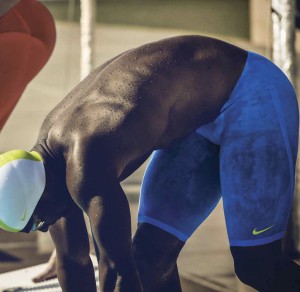Training Tips for Sprinters
 By: Eric McGinnis, CSCSDirector of SSP Swim
By: Eric McGinnis, CSCSDirector of SSP Swim
Rollins College Strength & Conditioning Coach
Sports Performance SpecialistSpectrum Sports Performance
Everybody wants to be a sprinter, but any experienced swimmer knows that swimming fast can be harder than it looks. Here are five tips, in no particular order, that can help you with your speed problems.
 1. Know the details
1. Know the details
Sprinters rarely have to endure the boredom of swimming endless laps on a day-to-day basis. The trade-off is, as a sprinter, you need to be extra dialed in to the “boring” details that make up perfecting your race. These include, but are not limited to, tempo, stroke cycles, number of dolphin kicks off the start and turns, and timing of the breakouts. One of the beautiful things about swimming is that, for the most part, you ALWAYS know what to expect on race day. It’s not unpredictable like team sports, which means you should know exactly what to prepare for and what works best for you.
2. Don’t get carried away with lactate sets
Let me be clear, I’m not against preparing the body for lactate threshold. However, lactate sets have become overly trendy and are often marketed as both “sprinter workouts” and “mental toughness workouts”. When you do overly aggressive sets like 20x50s all-out, the best you’re going to do is swim fast once or twice and then hopefully not throw up. Lactate threshold is difficult to recover from and can kill your speed. Don’t do it too often, and keep the volume of efforts at a reasonable number.
3. Embrace rest
You are an athlete. This means you train, you don’t workout. You’re goal is to create a very specific adaptation, which in this case is swimming VERY fast. In order to get fast you have to train fast, which requires adequate rest and recovery. I’m not just talking about tapering; I’m talking about recovery within the workout, recovery within the week, and recovery within the program as a whole. If you ever get a chance to watch track sprinters or weightlifters train, pay attention to how much they recover between max efforts. Also pay attention to how AGGRESSIVE they are when they perform an effort. I realize that swimming is not track and certainly not weightlifting, but the bottom line is speed and power need rest.
4. Practice breathing at full speed
This is a very underutilized training piece in my opinion. As a swimmer, you breathe hundreds of times per practice. How many of those breaths are practiced at race pace? When you’re swimming all-out the tempo is higher and the execution needs to be cleaner. This becomes most important if you take a breath somewhere in your 50 freestyle. Many of you might take 1 or 2 breaths in a long course 50. Know exactly when you will take your breaths and then practice them at an all-out pace in short increments. You can perform 12.5 meter sprints where you practice that breath at full speed while visualizing it being on the same stroke cycle you will take during the full 50.
5. Train speed year round
I’m strongly against putting off speed work until the end of a season. Building an aerobic base is not necessary for speed development; it only helps you recover faster from the high intensity work. If you want to be fast you have to train fast. Just a reminder, we’re trying to create an adaptation for speed. It wouldn’t be wise to spend a great deal of time training slow.
Leave a Reply